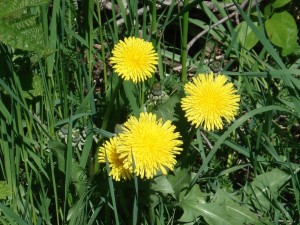
Say the word ‘weed’ and most people think of invasive and nuisance plants that grow in unwanted places, be it among flower beds, creeping up between paving slabs, or in this case the lawn. Common weed types found in lawns include daisies, dandelions, and clover. With discipline and a simple maintenance plan most lawn weeds can be dealt with early to avoid the onset of a larger ‘infestastion’ that is harder to cope with. Although you might automatically think that such activities all take place in the Spring and Summer, Autumn lawn care is also important.
Identifying Lawn Weeds
Typically lawn weeds manifest themselves in one of three ways
- Flowers such as daisies and buttercups appear in the lawn, and this is most evident when the grass is longer and in need of cutting
- The grass appears patchy and uneven, and areas of increased growth indicate the presence of weeds
- Areas including weed may thrive better or worse during drought giving the effect of a patchy lawn with some green and some brown areas
Why Weeds spread and How to Control Them
Weeds in lawns are able to survive regular mowing and can easily spread either by seed or wide reaching stems, depending on the amount of weed and the area it covers a number of different approaches can be taken to tackle the problem, these fall under two broad categories: Non-Chemical and Chemical.
Non Chemical Weed Control Methods
- Aerating and feeding the lawn. This ensures that the grass has a head start over weeds, meaning less chance of the weeds making an appearance
- Rake the grass before mowing to damage and discourage creeping weeds from growing
- Dig or pull out weeds such as daisies and dandelions, as well as weed killer resistant weeds such as silverweed or white clover
- Add lime to your soil in Winter, this will prevent certain weeds such as sorrels from growing come Spring time
- Unless you can spare the time to keep on top of it, don’t cut your lawn too short as this will weaken the grass and leave the door open for weeds to come in
- Make sure any compost added near or on the lawn is of good quality and does not contain any active weeds as you will simply end up introducing them to the lawn
Chemical Weed Control Methods (When the Above is Ineffective)
- Make sure you read the instructions given by the weed killer manufacturer to ensure you are adding the right dosage safely
- Choose a weed killer that is suited to the task at hand and your own personal preference, many types are available from sprays to granules, and some may require a watering can to apply.
- Bare in mind that although many weed killers work on a single application basis, some others require several applications over the course of a month or more.
- Be particularly cautious when applying weed killer to new lawns, as the fledgling turf will be susceptible to damage by many types of weed killer. Look for products containing Fluroxypyr when treating new lawns.


